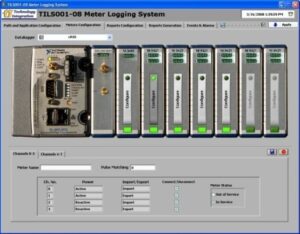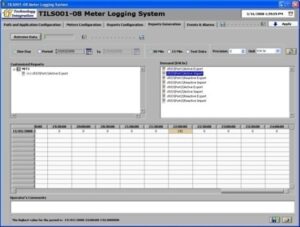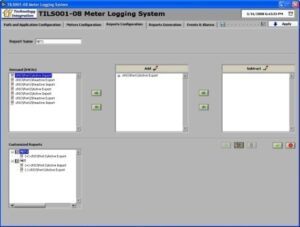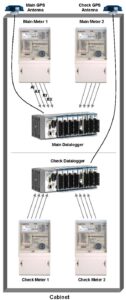
Meter Logging, Reporting, and Alarming Application
National Electric Power Company (NEPCO) objective was to elevate the data integrity and credibility of their metering system by installing a backup system to their existing metering system. The metering systems are installed at the reception and transmission points from their suppliers and customers; this backup system was an addition to their AMR system and should operated independently.
Each cabinet is to be installed at a specific location (Station/Substation). A total of 16 cabinets are to be installed + 4 Spare Part Units.
Main System Consists of:
- Main Meters
- Main Datalogger which consisted of:
- cRIO Real-time Embedded Controller, 128 MB Disc on Chip Storage, 64 MB DRAM
- 8-slot, 1 M Gate Reconfigurable Chassis for cRIO
- GPS Module for synchronizing the controller time with the satellites
- 4-Channel Digital Output module for alarming
- 8-Channel Digital Input Module for pulse counting, Qty. 6
- 110VDC Power Supply
- USB flash and memory device
Check System Consists of:
- Check Meters
- Check Datalogger which have the exact same configuration as the Main Datalogger
The datalogger contains a real time embedded controller that features an industrial 400 MHz real-time processor for deterministic and reliable real-time applications. It contains 64 MB of DRAM memory and 128 MB of nonvolatile storage. The embedded controller is designed for extreme ruggedness, reliability, and low power consumption with dual 9 to 35 VDC supply inputs that deliver isolated power to the cRIO chassis/modules and a -40 to 70 °C operating temperature range.
Communication is done through a 10/100 Mb/s Ethernet port. And for additional storage capability, the controller has a full-speed USB host port to which you can connect external USB-based storage media (flash drives and hard drives).
Each datalogger is connected to two meters and from these meters the following signals are acquired through the Digital Input Modules:
- Active Import (AI) Pulse Output
- Active Export (AX) Pulse Output
- Reactive Import (RI) Pulse Output
- Reactive Export (RX) Pulse Output
Pulses are logged every one minute and the results from each channel are then translated into demand (KW.hr/MW.hr or KVAR.hr/MVAR.hr). The demand is calculated based on the period configuration of the user (30min, 15min, or 5min for testing purposes).
Using the GPS module on the data logger, time integrity to the system is provided. The GPS module corrects any shifts on the datalogger‘s clock every one day.
The system accounts for Day Time Saving. The user can configure the summer or winter time start dates.
Physical alarms are connected to the Digital output module; 3 physical alarms are configured as follows:
- GPS Antenna Disconnection
- True Rise Alarm
- Full Memory on the Datalogger
Software developed for this purpose is the TILS Meter Logging System. TILS interfaces to the Compact RIO family of controllers/loggers in combination with meters with a known Pulse Output “Matching Factor”.
Each configured cRIO holds enough data to enable any computer with TILS software to interface and download meter data and readings for any period of time. This means that any operator will be able to download data and generate reports without having the configuration scheme of the specific logging system.
The whole system has an option of being networkable, monitored and controlled from a central location.



